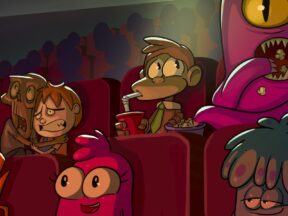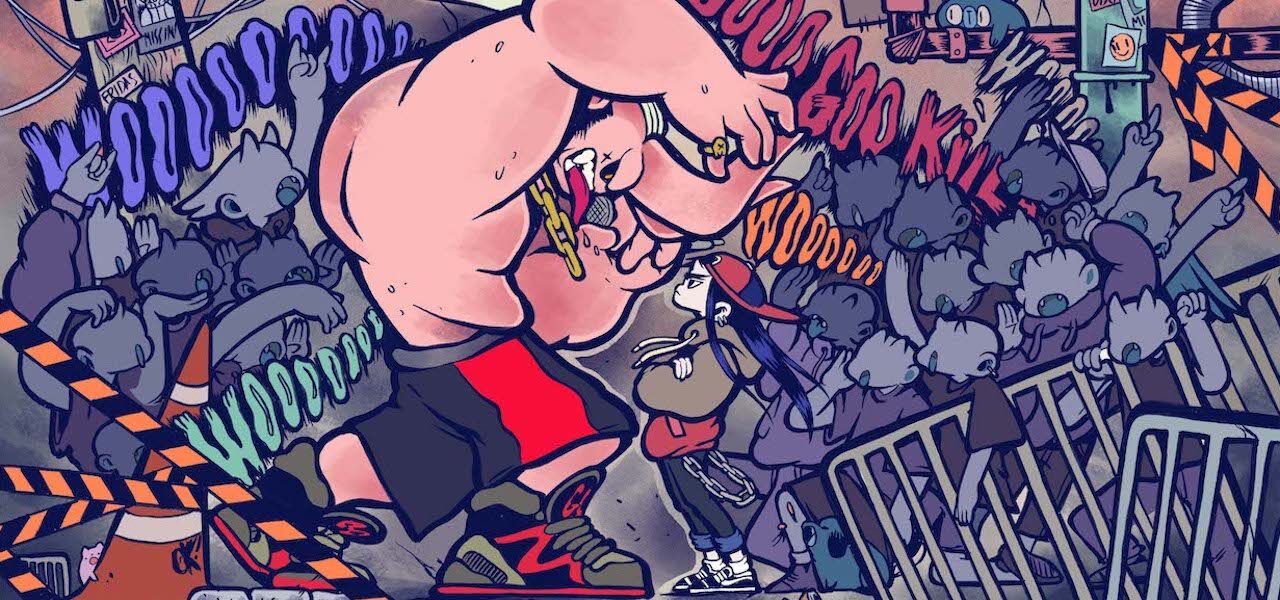
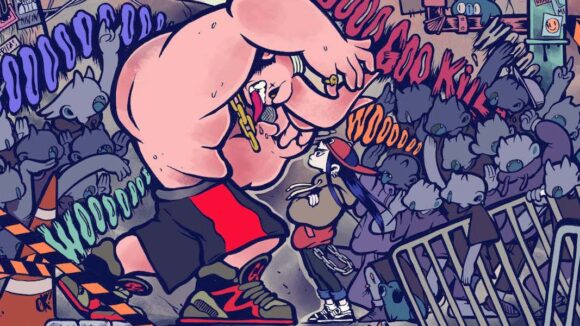
Ideatoon 2020: A Snapshot Of Latin American Animation Today
Around eight years ago, the organizers of Pixelatl, the Mexican animation festival, came to a realization. As a service industry, Latin American animation was booming; meanwhile, its artists were bursting with ideas for their own projects. What was missing was systematic, region-wide support for developing those ideas into marketable IP. Enter a new Pixelatl spin-off: Ideatoon.
The event goes like this: individuals and studios pitch ideas for series and features. Successful applicants are invited to a four-day bootcamp, where representatives from the likes of Cartoon Network and the BBC, as well as local companies, help them develop their project and refine their presentation. Some contestants then proceed to the final, held during Pixelatl in September, where they pitch their project to a jury while making further industry connections.
In the space of eight editions, the contest has turbocharged Latin American animation, launching many careers and raising standards across the sector as a whole. Dozens of participating projects have been optioned. Success stories include Alan Ituriel’s Villainous (sold to Cartoon Network Latin America ), Fernanda Frick’s Raise the Bar! (developed at Netflix), and Miriam López’s Molly and the Cryptos (Gaumont Animation).
This year’s edition drew 208 applicants from 14 countries. Thirty projects progressed to the bootcamp on June 23–26 — an increase on the usual 20, due to the overall strength of the submissions. Of those, 11 were selected as finalists, representing a diversity of styles, themes, countries, and target audiences. The pandemic pushed the events online, but participants still received invaluable advice and exposure.
Cartoon Brew spoke to the creators behind four finalist projects, asking each the same questions about their work, their experience of the event, and the animation scene in their home country. Here, then, is a snapshot of animated IP creation in Latin America, at a time of remarkable growth and endemic challenges…
The Whisper of the Sea (El Susurro del Mar) by Marcela Rincón and Jorge Estrada (Colombia)
Format: 76 min feature
Age group: 6–8
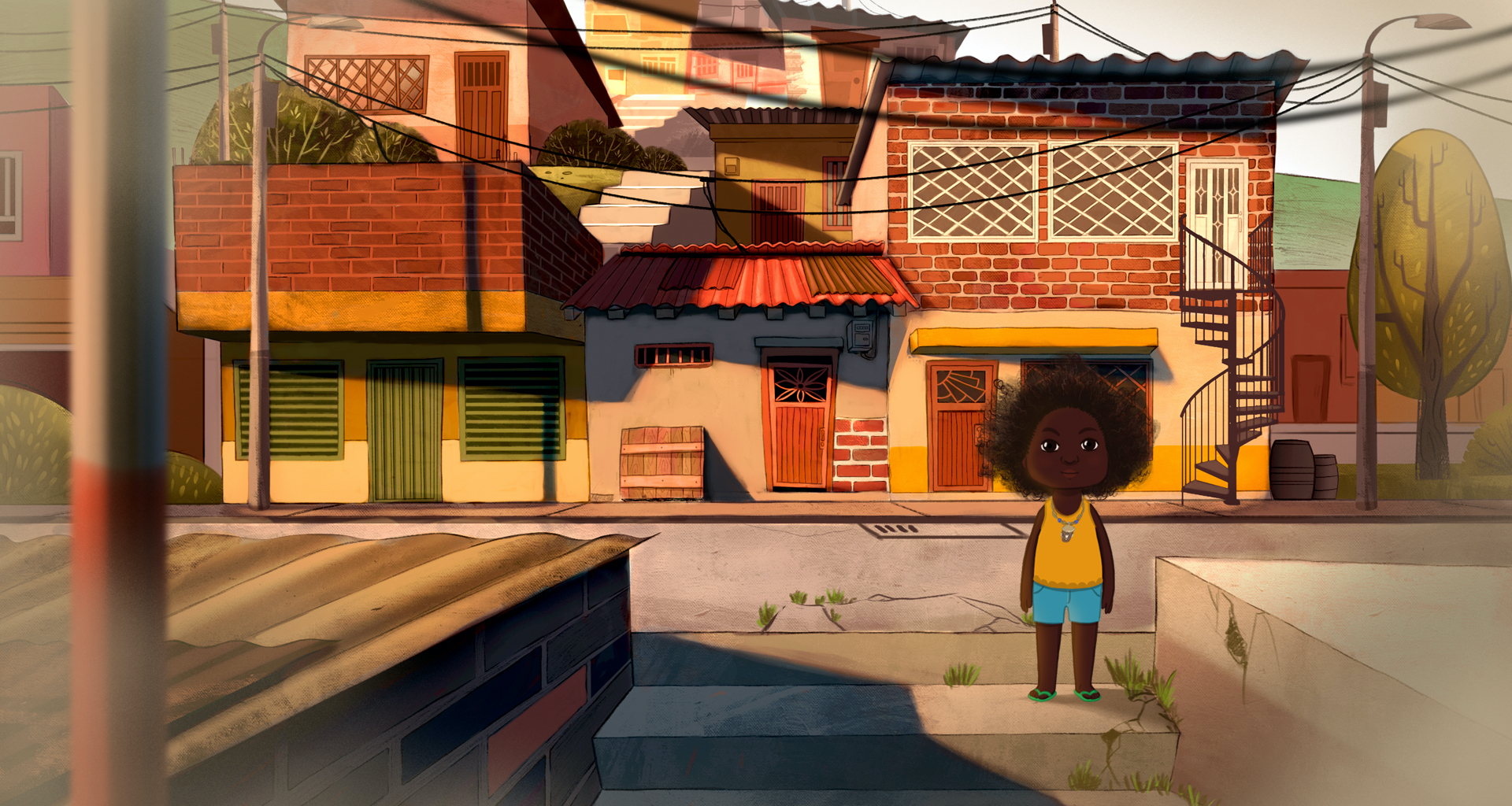
When you first applied to Ideatoon, what did you hope to get out of the experience?
Marcela Rincón: We’ve seen how Ideatoon has been growing in these years to become one of the most important events in Latin America. We want to meet new possibilities for the project, partners, windows, and co-producers.
How has your project changed throughout your participation in Ideatoon?
Participating in Ideatoon helped us to improve our pitch. All the feedback we received was incredible [in helping us] to understand how the industry can receive our story and film project. It also gave us information about what areas we need to fortify, and some ideas of which path we can continue [down] in order to find partners for our film.
What was the most valuable part of the experience for you?
Definitely two spaces: the masterclasses that were very good and the meetings that were very good. And the previous training with Joan Lofts — her feedback and training were very valuable.
How much support is there for developing animated IP in Colombia?
At the moment in Colombia we have several public funds that support the development of animated projects, such as FDC Development Project, CREA Digital, Mintic, and Mincultura for series development. A couple of years ago we used to have a fund called the New Media Colombian-Canadian for project development. Of course, there is much more than ten years ago, but you always wish you had more.
How is El Susurro del Mar different from what is being produced in Colombia?
In Colombia we have a very special environment for producing animation. I think especially with Fosfenos Media, our company producer, we love to work with projects that can show a bit of our culture and can have a lot of identity. El Susurro del Mar will have a lot of that in many ways. Also we have many restrictions, especially talking about funds if we compare with other countries, so we [must] be very creative to [when it comes to the] artistic and producing processes.
What are the main strengths and weaknesses of the animation industry in Colombia?
First of all, the Colombian animation industry is consolidating,. There is a growing sector, with a lot of talent and good prospects. The weaknesses continue to be specialized training and project financing — creating a culture of private investment to achieve greater national support from private companies. As for the strengths, without a doubt, the talent, the creativity, and prices that are highly competitive internationally.
Bailorama by Santiago Santana, Marco Olmedo, and Arturo Montero (Mexico)
Format: 5 x 11 min series
Age group: preschool
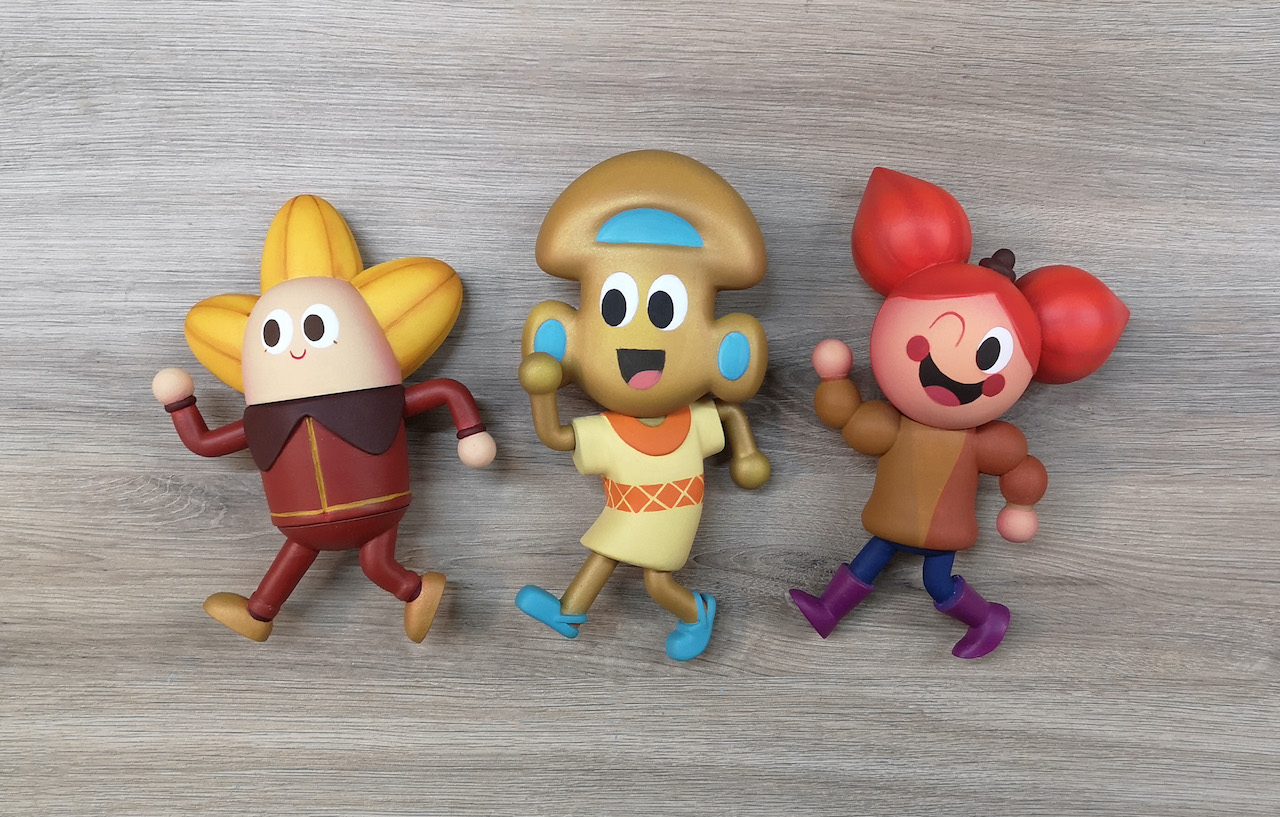
When you first applied to Ideatoon, what did you hope to get out of the experience?
Santiago Santana: This is our second time being finalists — the first one was in 2015, and I can say a lot has changed since. When we applied this time, we wanted to reintroduce our company to the industry, to show how much we have grown, and hopefully to connect our latest IP project Bailorama for further development and possibly get closer to a pilot.
How has your project changed throughout your participation in Ideatoon?
In Ideatoon, we had the opportunity to be assessed by industry experts and professionals throughout the whole process. It helped us a lot to reaffirm which parts need more work and which are strong enough for the international quality standard. I also think the pandemic affected a lot how these events work, because sometimes the most valuable moments happen after everything else, with a couple of beers and in a more relaxed environment.
What was the most valuable part of the experience for you?
For me, being evaluated by industry experts and professionals is key to achieving our goal, which is to start a relationship with co-producers and distributors to make our first pilot from any of our IP projects. We’re always very grateful for all the feedback and interest we get in these industry sessions, and I believe this meeting format is very helpful to all creators and studios looking to develop further their IPs.
In general, how much support is there for developing animated IP in Mexico?
To be honest, I don’t think this subject is black or white, but shades of gray. Recently several government funding programs, which are essential for the creation of original content in creative industries, have been cut down. These are programs that have supported creators for several years to make their own ideas, dependent on their services for survival and most of the time unable to self-finance their projects.
On the other side, events in Mexico like Pixelatl and Sublime have helped us and many other creative companies to reach into the international industry. Nevertheless, without strong budgets, only a few can succeed in giving their IP projects the continuity they need to make a pilot happen. Still, I believe Mexican content is making its way step by step, and I hope more people from the international industry become interested and reach out.
How is Bailorama different from what is being produced in Mexico?
In Hikuri, our IP company, we always try to think outside the box, no matter how crazy that might be, focusing in our early years on adult animation, which led us to find love in stop-motion animation. That pushed us to create a brand called Haxu 3D Props where we could develop many kinds of props, sets, or puppets for stop motion through 3d printing. That’s when Bailorama’s characters popped out: we had these beautiful silhouettes with great personalities, and we thought, why not try kids’ animation? Especially for very small and imaginative [children].
We wanted a show for anyone, a world where all felt included, because diversity and collaboration are very important in our opinion. That’s when the name hit. It doesn’t matter if you’re a kid, a plant, a giraffe, or a color: Bailorama is a place where everyone is welcome to dance and play together, and stop motion creates a strong feeling of reality — you could almost grab the characters.
What are the main strengths and weaknesses of the animation industry in Mexico?
I believe our main strengths are: a strong creativity from all of our cultural background, and great problem solving from this urge as creators to keep developing new ideas, no matter the situation. The main two weaknesses of the animation industry in Mexico are, firstly: a lack of teamwork — we still don’t understand how uniting our best skills and teams, instead of closing our doors, can lead to an exponential improvement in our processes and quality.
The second is all the job poaching happening in Mexico from foreign companies, taking our best artists trained by us and leaving us with the responsibility to train new artists and not having many people to rely on for the long game.
Hellcyon by Lucas Marangon and Alberto Arvizu (Mexico)
Format: 10 x 22 min series
Age group: 18+
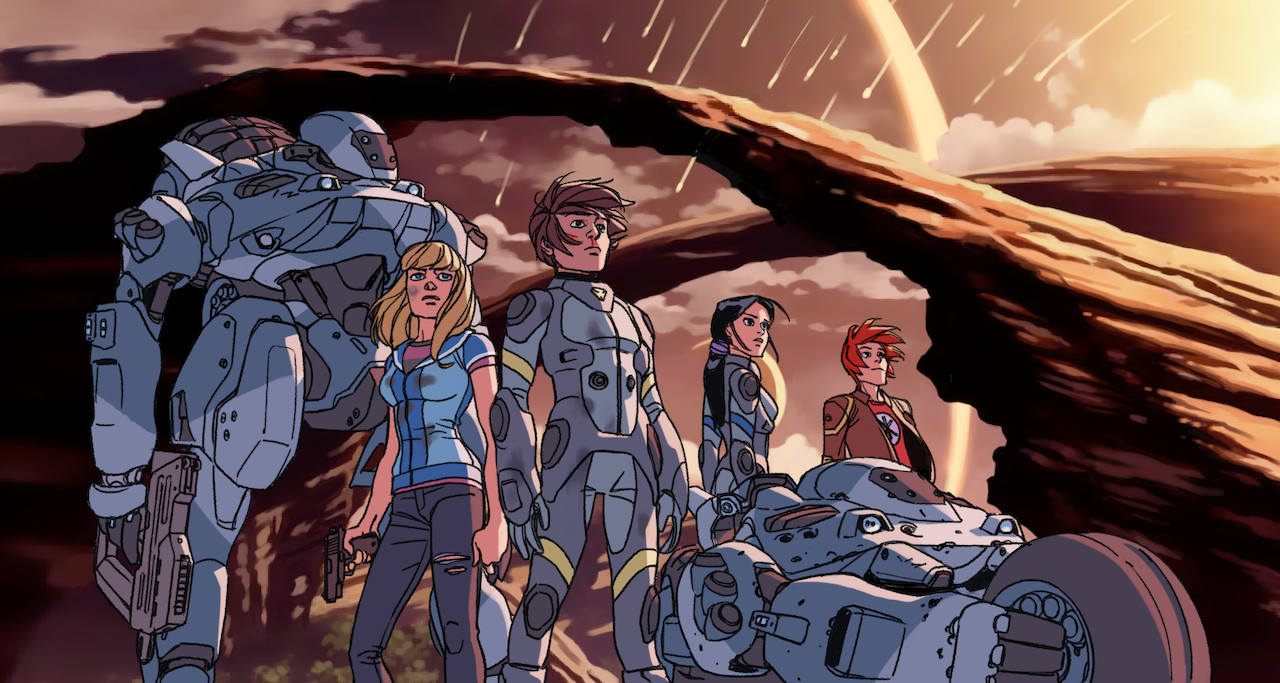
When you first applied to Ideatoon, what did you hope to get out of the experience?
Lucas Marangon and Alberto Arvizu: We knew how difficult it was to be selected, so we didn’t want to keep our expectations too high. But we also knew that we had a solid pitching bible, and that this was a good opportunity to put the project in the hands of people inside the industry.
How has your project changed throughout your participation in Ideatoon?
Substantially it didn’t, because we had been working on it for over a year, applying everything that Alberto learned over past editions. The real challenge was (is) to find it a “home,” because it’s aimed at adults (which is also the reason we didn’t expect to win). Some did suggest to us to widen the age group, but we decided we want to deal with social and personal issues in a mature way. Then they would say that Avatar also does that, and we would tell them that we don’t want to be Avatar. We want to be Akira.
What was the most valuable part of the experience for you?
Generally speaking, Latin American creators have very few spaces to reach all those executives and professionals, and for that we are very grateful to Pixelatl. We also get to receive tuition from top industry professionals to polish our projects and pitches, which is invaluable.
In general, how much support is there for developing animated IP in Mexico?
We had a good laugh with this one. There are some government grants but they’re clearly insufficient. Culturally, Mexico has been taken over by the U.S.’s mass culture, and recent administrations have done very little to counteract it; the private sector doesn’t even try. Virtually, if not for Pixelatl, we wouldn’t have anything.
How is Hellcyon different from what is being produced in Mexico?
Let’s see: it’s a “real robot” sci-fi adventure thriller with social commentary and a rap metal score. Where you want to start? (Just kidding.) This year we were also the only project aimed at adults, which we find odd, given the huge adult audience worldwide searching for animated productions just for them.
What are the main strengths and weaknesses of the animation industry in Mexico?
Its main strength is the fact that the creators and artists have formed a very supportive and brave community. They know they have it hard and they take the plunge anyway. Lucky White, another very ambitious movie project produced by Alberto, could only make it to the finals because of that mindset.
The bad and the ugly is the funding, something we’re not expecting to change any time soon. That affects quality quite a bit: I’m not sure the local animation industry can handle sakugas with transforming robots, which is what we want for Hellcyon at this point.
Fridastyle by Santiago O’Ryan (Chile)
Format: 13 x 22 min series
Age group: 12–14
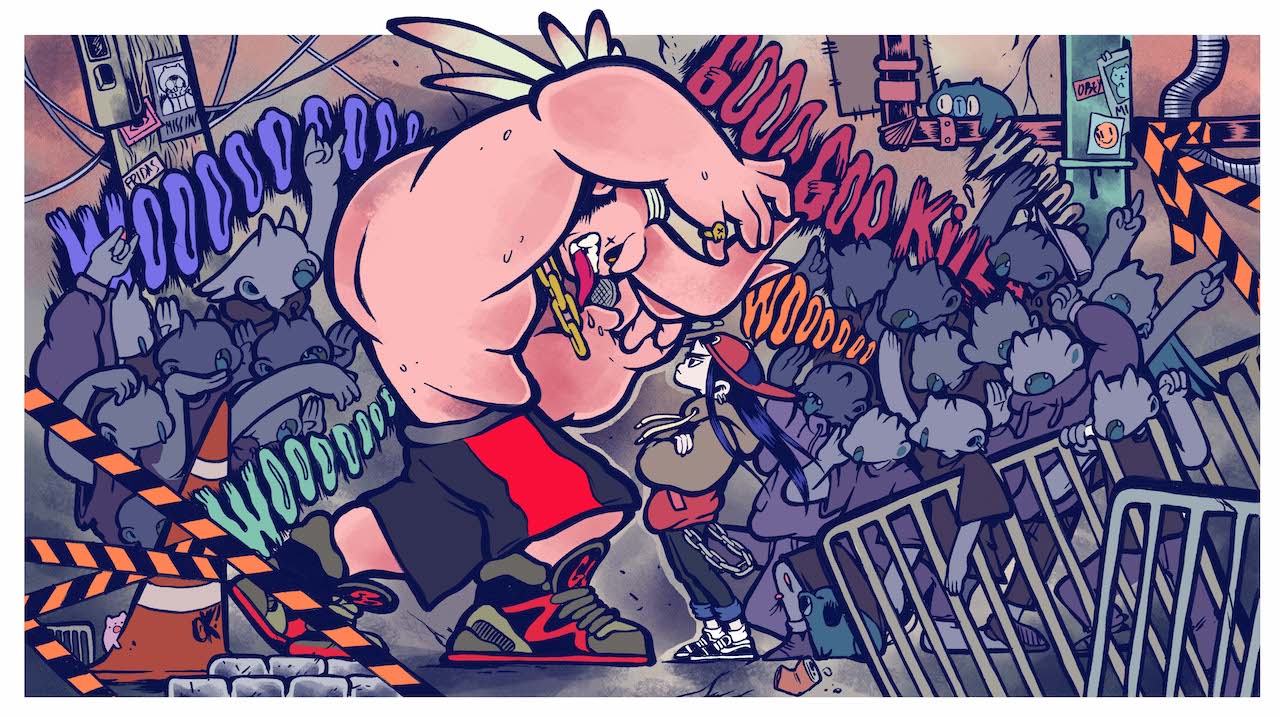
When you first applied to Ideatoon, what did you hope to get out of the experience?
Santiago O’Ryan: Ideatoon seems to me by far one of the best experiences in terms of the quality of the guests, the feedback we receive, the professionalism of the creators, and the human quality of the people who organize it. This is where ideas come together, from creators with a lot of experience to those who are just starting out, which I think is wonderful. You can do well, but never badly, since here experience is what matters. The most remarkable thing that Ideatoon delivers is visibility, placing the idea in the heads of the players, promoting them on different social networks, and continuously supporting them.
On the other hand — and this is a criticism of the industry — there’s the real effectiveness of pitches as a sales tool. As a great Argentinean filmmaker, Lucrecia Martel, says: “What is the need for such speed? If Shakespeare pitched Romeo and Juliet, who would give him money?”
Pitching has become very popular lately. It is clear that it is a useful tool, but it also has its “trick”: many times, creators are made to do a kind of stand-up comedy of the idea, and that makes me think of all those shy people, less histrionic, less sociable, but with a great talent and capacity to build great stories who are outside this game.
How has your project changed throughout your participation in Ideatoon?
I think that in this type of experience the important thing is that they don’t change your idea, but that they improve it. Ideatoon helped me to reaffirm many doubts I had about my project, and what I liked most was the disparity of the comments (for example: some loved the design and others found it very complex and difficult to read). That shows that ideas are not an exact science.
On the other hand there is the issue of the players, what the market is looking for. This can be deceptive and very changeable. For example, when they look for something like the new Adventure Time, I feel that many times they are looking for a clone and not the impact that something different generates in the audience, which is what this program achieved. That’s why, in general, the new programs come from the same participants of those popular projects and they tend to be very similar to each other, in terms of story and aesthetics.
What was the most valuable part of the experience for you?
Meeting people — that’s why I missed the festival so much in a face-to-face way, and meeting other creators is always the best part of this kind of experience. On the technical side, the feedback we received was very complete and accurate, and at the end of the project we received a very detailed report with the weaknesses and strengths of our projects, and the opinions of each judge. I found that very innovative, necessary, and above all useful. It somehow “mechanized” the emotional feedback that the project received.
How much support is there for developing animated IP in Chile?
For the initial development there was a very important support called Corfo TV Series, which gave an economic impulse to develop the animated IPs, from the idea to the realization of a bible, animated teaser and pilot script. With this support, as Lunes Animation Studio, we were selected in pitches from all over the world with our IPs: Annecy, Ottawa, Ventana Sur, and Rio Content. As a country, we managed to compete at least in the field of ideas with more developed industries.
Unfortunately, this support fell by 80% due to the pandemic and the social crisis, which was a hard blow for animation producers. But artists in Latin America are used to going against everything, so we are going to recover. That is why it is so important that Chile approved the creation of a new constitution [in late October], so that in the future art will be seen as an essential good for the community, and not only as a consumer good with the rules of the economic market.
How is Fridastyle different from what is being produced in Chile?
Fridastyle is based on real life, and real life is not only comedy. I think that animation players have forgotten about using drama to capture the emotions of the audience, especially children — they only look for humor, which can be [done] more easily. Everything has become a meme.
Of course, life has comedy, but it also has drama, and a lot of it. We children in Latin America were raised watching telenovelas (soap operas), and we understood perfectly that what we were watching was fiction, but we were deeply involved in the story and the emotions of the protagonists. This is something I would like to recover in the animated projects I am working on: the drama, the crying, the suffering, the lack of love.
What are the main strengths and weaknesses of the animation industry in Chile?
Diversity and talent (this goes for all of Latin America). Here in Chile, incredible things are being done, and there is a diversity of looks and styles that excites — no one is doing the same as the other. The animation schools have been around for a very short time, so everyone has developed their own style: there are graphic designers, filmmakers, poets, cartoonists, visual artists, illustrators, publicists, writers, etc.
Professionals who did not get directly into animation but had different paths. But I also feel that the animators who are just starting, and are from animation schools, come with a lot of strength, technique, hunger and a lot of talent.
On the other hand, our weakness has always been financing. I believe that the region is unfairly punished, and international prices are not paid by the multinationals. These big players say that they don’t have the resources to make productions in Latin America, so — and this seems crazy to me — these multinationals depend on the state financing of each country to get projects out of the region, appealing to “visibility.” This generates very precarious jobs, and much of our talent must constantly migrate to North America. There is no industry here — just some crazy people who love what we do.

